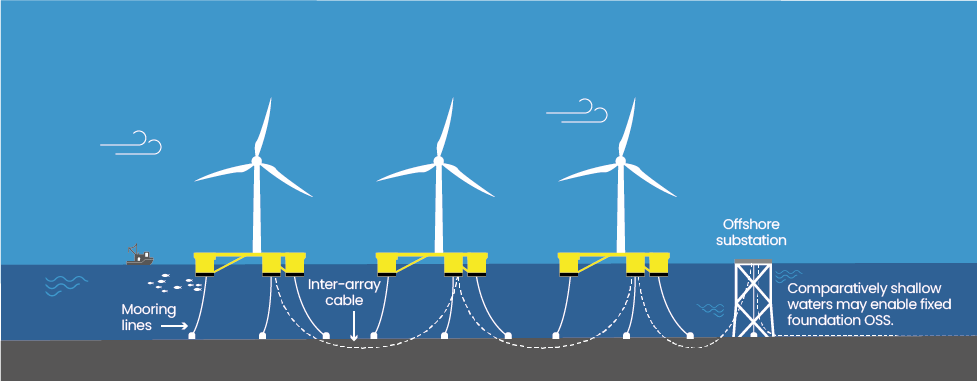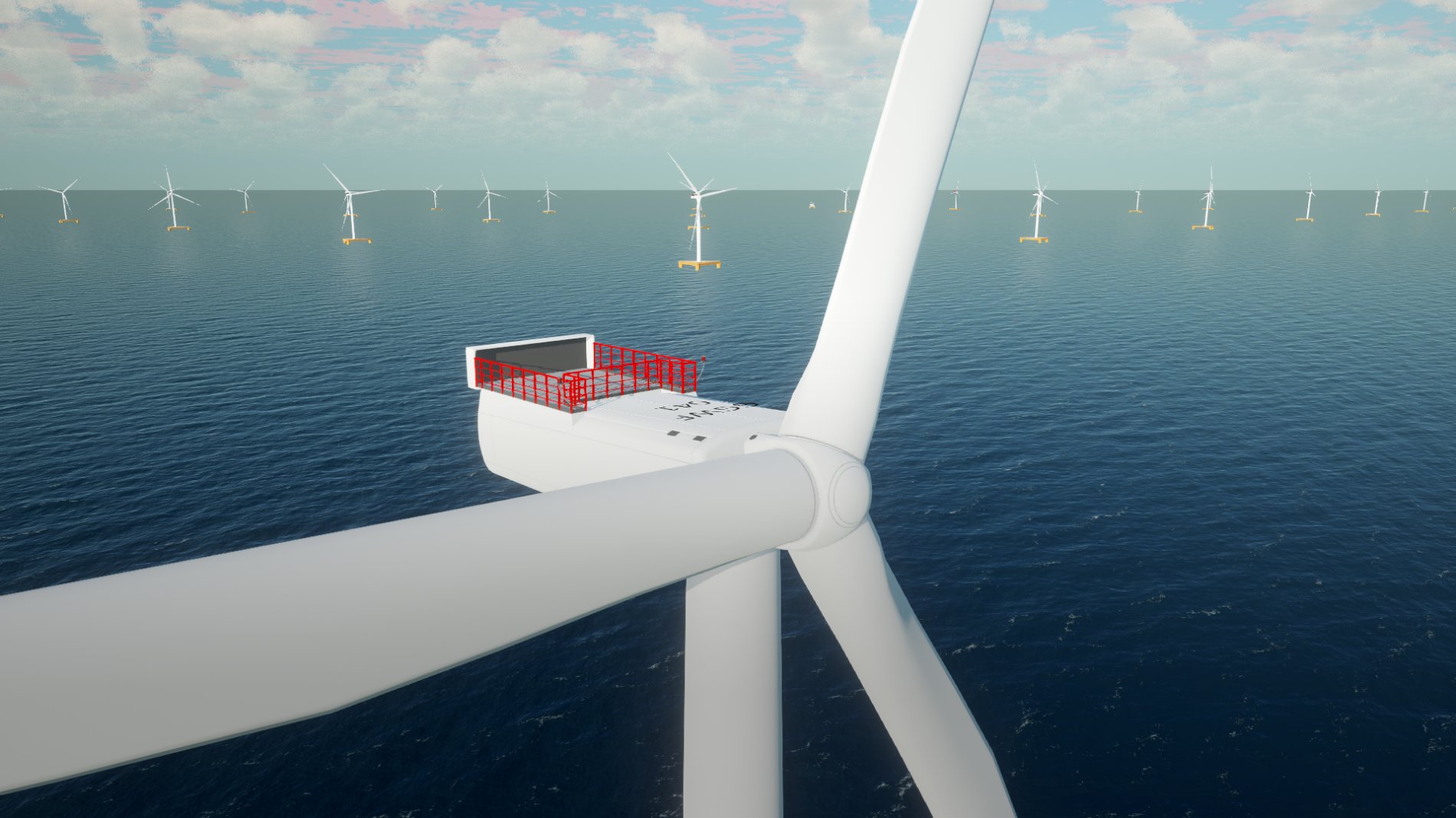Floating Wind
Floating wind will contribute to the UK’s energy security and is critical to meeting net-zero emission targets.
Traditional fixed offshore wind turbines are restricted to waters up to 80 metres deep. Combining the tried and tested technology of offshore platforms and wind turbines we can now move into deeper waters with higher and more consistent wind speeds.
Floating foundations can be used at deep depths and consist of a balanced floating substructure moored to the seabed with anchors. The substructure may be stabilised using buoyancy, mooring lines, or a ballast. Several designs for floating offshore wind substructures currently exist for various depth ranges, including barges, semi-submersibles and tension leg platforms.
How offshore floating wind farms work

Foundations can be built onshore and installation of the turbine can take place in sheltered waters, before being towed out to sea for connection.
An array of floating platform substructures offshore are connected to one another via inter-array cables, which transport electricity generated from the turbine to fixed offshore substations. Export cables transport the energy to shore, connecting to the grid and powering homes.
EDF power solutions is a leader in floating offshore wind technology
EDF power solutions has built Provence Grand Large, France’s first floating offshore wind farm. This video shows how the technology works.



